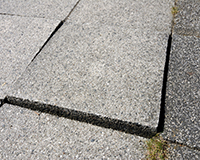A landlord who was ordered to pay his tenant around £3,750 in damages for an injured knee will learn on Wednesday (13 July) if he has been successful on appeal to the Supreme Court.
Five Law Lords will give judgment in the dispute over the implied repairing obligations in section 11 of the Landlord and Tenant Act 1985.
They will decide whether the landlord under a short lease of a premises, in respect of common parts of the building including the exterior of the building, was liable for his tenant’s injuries under the extended covenant implied into the tenancy by section 11(1A) of the 1985 Act.
The dispute has involved a seesaw battle through the courts to this point.
Tenant Samuel Edwards, who tripped over an uneven paving stone outside his block, was initially successful before District Judge Gilman, who awarded him £3,750 in damages. However, on appeal, Judge May QC found that landlord Baladas Kumarasamy was not liable under the extended covenant implied into the tenancy by section 11 (1A) of the Landlord and Tenant Act 1985.
Last year, Lewison LJ, at the Court of Appeal, allowed Edwards’ appeal and reinstated the award, ruling that it was not a precondition to liability under section 11 that notice of the defect had to be given.
Surveying the case law, he concluded that Kumarasamy’s liability was not conditional on notice having been given.
Edwards successfully argued that liability arose as soon as the disrepair existed and, referring to the common law, Lewison LJ said: “The general rule is that a covenant to keep premises in repair obliges the covenantor to keep them in repair at all times, so that there is a breach of the obligation immediately a defect occurs.”







